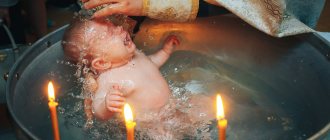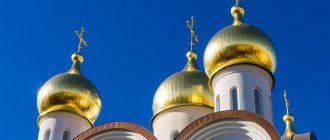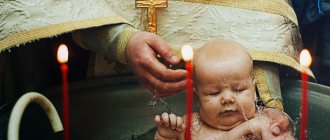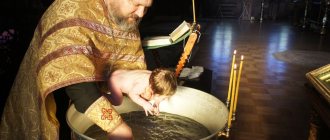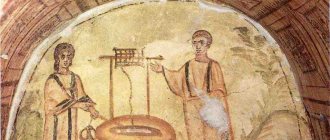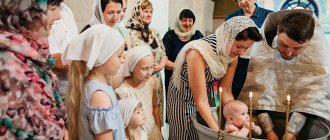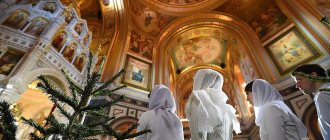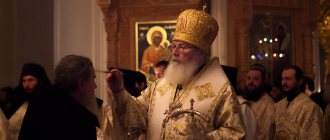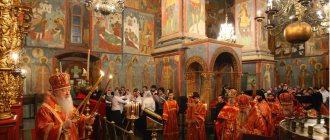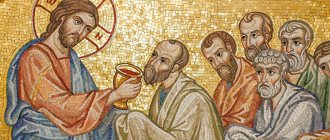Bishop's Liturgy. Follow-up for a deacon.
| Random page | VOLUME-1 | VOLUME-2 | TOM-3 Cars | Astronomy | Biology | Geography | A house and a garden | Other languages | Other | Computer science |
| Story | Culture | Literature | Logics | Mathematics | Medicine | Metallurgy | Mechanics |
| Education | Occupational Safety and Health | Pedagogy | Policy | Right | Psychology | Religion | Rhetoric |
| Sociology | Sport | Construction | Technology | Tourism | Physics | Philosophy | Finance |
| Chemistry | Drawing | Ecology | Economy | Electronics |
The Liturgy of the Presanctified Gifts is essentially a priestly service designed to be celebrated on weekdays in simplicity and in accordance with other Lenten services, which are also simplified in structure and character in accordance with the spirit of the Lenten period. It should be remembered that this service is not actually a liturgy (for the consecration of the Holy Gifts is not performed here), but is Vespers with elements of the Divine Liturgy included in order to ensure that the community is properly prepared for the reception of the Holy Gifts.
For this reason, when a bishop celebrates the Presanctified Liturgy, it is most appropriate that he do so simply, maintaining the special status of this service - with the exception of certain significant occasions that may occur during Great Lent, when the hierarch will concelebrate with several clergy. (For example, to mark a significant event in the life of a parish that falls during Lent on a weekday or during a fast pastoral retreat (meeting or confession), when many clergy concelebrate).
Thus, there are two ways for the bishop to celebrate the Liturgy of the Presanctified Gifts:
Simple episcopal succession (“priestly rank”):
This is the most common way in which the hierarchs of our diocese celebrate the Presanctified Liturgy on ordinary Wednesdays and Fridays of Lent.
During such a service, the bishop (who can be dressed either in his usual vestments, or only in a phelonion with a small omophorion - in any case, he retains the small omophorion throughout the entire service, without removing or replacing it). Basically, he serves in accordance with the instructions of the priestly celebration of the Liturgy of the Presanctified Gifts: he begins at the altar; The Royal Doors open and close at appointed times; etc.
The specific features of this order include the following points:
- During the litanies, the Royal Doors open and after an exclamation they close again.
- At the Small Entrance of Vespers, the bishop remains in the altar and blesses the entrance through the Royal Doors, as during vespers at the All-Night Vigil (when priests and deacons make an entrance with a censer or the Gospel according to statutory instructions, and the bishop blesses the holy entrance. The blessing of the entrance from the altar is not performed only in the event that the bishop serves alone without other priests).
- At the moment “The Light of Christ enlightens everyone...” the bishop blesses the people with a trikiria and a censer (not a candle and a censer).
- When entering with the Gifts, if the bishop serves without a priest, he enters on his own. If a priest concelebrates with him, then the bishop remains in the altar while the other clergy exits through the northern doors to the solea. He silently receives the paten from the priest, then utters the usual exclamation (“By faith and love let us approach...”) and places the paten on the Holy Altar.
- After entering with the Gifts and completing the prayer of St. Ephraim the Syrian, the bishop blesses the people with the trikiriy and dikiriy, and the choir sings “Is these people, the despot.”
- At the end of the service, the bishop pronounces the dismissal with dikiriy and trikiriy, including the singing of “Is pollla these, despot.”
The rest of the service corresponds to the standard rules of priestly rites, where the bishop performs the function of the upcoming clergyman.
Full episcopal succession:
In cases where there is a need for a more solemn service of the Liturgy of the Presanctified Gifts, the full episcopal succession can be used, which combines more elements from Vespers and the Divine Liturgy performed by the bishop's rite.
- If a meeting with the bishop is necessary, it is preferably done in silence, after which entrance prayers follow, as usual, although entry with the usual chants is also possible, performed at the request of the bishop.
- On especially important occasions, the bishop may vest himself in the pulpit; although in our diocesan practice he usually vests himself at the altar in his full vestment with the great omophorion (at this point he does not wash his hands, as this will be done later). Before the start of Vespers, all the clergy kiss the altar, and the Royal Doors are opened for the bishop, through which he enters the pulpit, and the rest of the clergy through the side doors (as at the beginning of the Divine Liturgy), standing before the start of the service near the pulpit in both rows.
- The first part of the service is performed by the bishop at the pulpit in the same way as at the beginning of bishop's vespers. The senior priest, after opening the Royal Doors, gives the initial exclamation, and after this (with the deacon) at the kathisma he performs the transfer of the Presanctified Gifts during the reading of the three glories. Shouts after various litanies, according to custom, are distributed among the priests.
- The Royal Doors are opened at the beginning of the service for blessing and remain open while the reader reads the opening prayers until the Lord's Prayer. After the exclamation “For Thine is the kingdom...” The Royal Doors are closed. They open for each litany and close after each exclamation.
- The bishop washes his hands at the pulpit while singing “The Lord has cried...”, when the deacon burns incense in the church.
- Entrance to vespers is performed in the same way as it occurs at an ordinary bishop's vespers, with trikiri, dikiri, ripids and candles. When a bishop stands at the pulpit, entry always takes place with the altar Gospel, even if the charter prescribes “entrance with a censer.”
- Despite the presence of the bishop in the altar, the Royal Doors are closed during the readings and open for prokeimnas between paremias. The bishop blesses the faithful with the trikiria and censer with the words “The Light of Christ enlightens everyone...”.
- During the antiphonal singing of the second verse “Lord, I have cried to You...” (after the readings), the bishop stands with a censer in front of the throne and burns incense throughout the first three verses and choruses. The trio sings verses in the center of the temple, while all the clergy in the altar (except the bishop) and all the faithful prostrate; then the clergy rise each time to sing the chorus with the choir. This is repeated four times. On the fourth verse, the bishop goes to the altar on which the Presanctified Holy Gifts are located, and censes there while the verse is chanted. At the moment of the chorus, he hands the censer to the deacon, who continues to incense the Holy Gifts, while the clergy remove the great omophorion from the bishop. He then returns to the altar, where he and the other clergy prostrate himself during the last chanting of the verse “Let him be corrected...”.
- The service then proceeds largely in accordance with the instructions of the bishop's Divine Liturgy. During the singing, which replaces the Cherubic Song (“Now are the powers of heaven...”), the bishop, leaving through the Royal Doors, washes his hands on the pulpit, and when he returns to the throne to perform the threefold prayer, a small omophorion is placed on him.
- At the entrance with the Presanctified Holy Gifts, the deacon carries air (on his shoulder) and a censer and a candle in his left hand, while the senior priest (but not the deacon, as usual in the bishop's liturgy) carries the paten with the Presanctified Gifts; if there is a second priest, he takes the chalice and follows the first. If only one priest concelebrates, he takes both vessels, carrying the paten in his right hand and the cup in his left, and holding the paten slightly higher than the cup, since the Holy Gifts on it are already fully consecrated. The entrance is made silently, the deacon censes the path in front of the paten, which the priest silently hands over to the bishop. The bishop says “By faith and love let us approach...”, then places the paten on the throne, after which other clergy enter the altar and place other sacred vessels in their places.
- After the prayer of St. Ephraim the Syrian, which follows the entrance with gifts, the bishop blesses the people with trikyriy and dikyriy, and the choir sings “Is polla these, despots.”
- The small omophorion is removed/replaced during the remainder of the service according to the usual rites of the liturgy.
- When giving Communion to the clergy, the deacon does not say “Amen” three times when the bishop drinks the cup, as usually happens at the Divine Liturgy. The Lord consumes the cup in silence.
- At the end of the service, the bishop pronounces the dismissal with dikiriy and trikiriy, and the choir sings “Is polla these, despota.”
Thus, any divine service can be a bishop’s service.
Over the course of history, a parish system was established in the Church, so that priests became the main performers of divine services in each parish. Nevertheless, the liturgical life of the parish depends entirely on the ruling bishop:
“No priest can officiate... unless he has been ordained, and ordination is from the bishop; therefore, the bishop’s grace acts through him (the priest). Further, the priest does not perform the sacraments without the throne, but the throne is consecrated by the world, and the world is consecrated by the bishop alone... Also: no one baptizes unless he has been ordained... And also cannot baptize without the world... Consequently, the bishop performs all the divine sacraments... And without it there will be no throne, no ordination, no St. peace, no Baptism, and, therefore, Christians" ( Simeon of Thessalonica
. About sacred anointing. Ch. 77 (in Russian edition (45)).
The idea of a connection between bishop and parish is constantly emphasized:
- the name of the ruling bishop is proclaimed at almost every divine service;
— The Eucharist is celebrated on an antimension signed by the bishop.
The priest is entrusted with the celebration of the Eucharist, etc. services in his parish, but he does not possess the fullness of the apostolic gift that rests on the bishop - the sacrament of the Priesthood and certain sacred rites can only be performed by the bishop:
“Divine legislation devoted the consecration of hierarchical ranks, the sanctification of the divine world and the sacred perfection of the altar to the only perfect powers of the divinely inspired hierarchs” (Areop. EH. 5.5).
The order of the Divine Liturgy and partly the services of the daily circle
can change quite a lot if the bishop leads the service (or even is simply present in the temple).
Definition: It is customary to refer to the above-mentioned sacraments and sacred rites as bishop’s services, as well as those features in the rites of the liturgy and other services that are associated with the participation of the bishop in them.
Sacred rites performed only by the bishop
| ordination | consecration in |
| 1.bishop (unlike other ordinations, it is performed with the obligatory participation of several bishops), | 4. subdeacon, |
| 2. presbyter, | 5. reader, |
| 3. deacon; | 6. singer, |
| 7. cleric | |
| consecration in | miscellaneous |
| 8.archdeacon | 14. awarding clergy with church awards ; |
| 9. protodeacon, | 15. rites of consecration of the temple |
| 10. archpriest | 16. rites of consecration of the antimension; |
| 11. protopresbyter, | 17. the rite of consecration of the world (can only be performed by the Head of the autocephalous Church or on his behalf); |
| 12. abbot | 18. the rite of crowning (performed only by the Primate of the Church in a monarchical state); |
| 13. archimandrite (as well as in the church ranks of icon, etc.); | 19. Most liturgical actions (rites of the donkey procession , cave action , etc.) require the obligatory participation of the bishop. |
| 14. awarding clergy with church awards ; |
Features in the order of other sacred rites with the participation of a bishop
Charter - requirements for the participation of a large number of clergy:
· protodeacon,
· several presbyters and deacons,
· subdeacons – 7-10
two are served to the bishop dikiri
and
trikirium
(they usually lay out
orlets
),
two (or four) are awarded ripids
,
one (the so-called book holder) holds liturgical books
,
one (the so-called pososhnik) carries the bishop’s staff,
one (when serving as the ruling bishop in his diocese) is awarded a primacy
— remote candle;
during the Patriarchal services, another subdeacon holds the external Patriarchal cross during the service. (In modern Greek A.B., as a rule, the functions of subdeacons are performed by deacons.)
The vestments of the bishop are a symbol of the fullness of the grace resting on him. To the east tradition, the main sign of difference between a bishop and presbyters is the omophorion
, mentioned as the usual bishop's vestment already by St.
Isidore Pelusiot
(† 1st half of the 5th century) (Κούρκουλα. Σ. 63-65). After the XI-XII centuries. Others were added to the omophorion, so that from the 18th century. a complete set of bishop's vestments in the Orthodox Church. traditions include:
| 1) bishop's kamisiy (so-called podsakkosnik), | 2) 2 omophorions (large and small, the 1st is worn during processions, the 2nd - during the actual sacraments), |
| 3) stole , | 4) panagia [3] |
| 5) belt , | 6) miter |
| 7) instruct , |  how an archpastor a bishop has an archpastoral staff how an archpastor a bishop has an archpastoral staff |
| 9) club , | 10) as a monk, the bishop also dresses in monastic robes, of which the bishop’s mantle , hood or kukol ; for the Patriarch - the second paraman (Dmitrievsky |
| 11) sakkos (can be replaced by felonia ), |
For A. b. in Russia it is customary to arrange an elevation in the center of the temple - the so-called. bishop's pulpit
(other names - locker, cloud place), on which the bishop stands when he is not in the altar, but in the temple, and from which the Gospel is read.
For Russian A. b. often heard untranslated Greek. texts:
· “Εἰς πολλὰ ἔτη, δέσποτα” (For many years, lord - see Is these
,
despot
);
· “Τὸν δεσπότην καὶ ἀρχιερέα ἡμῶν, Κύριε, φύλαττε” (Our Lord and bishop, O Lord, save),
· “̀ρδβλθυοτε Αξιος” (Worthy - see Axios
),
· “Κύριε, ἐλέησον” (Lord, have mercy), etc.;
· at the end of the Patriarchal service the polychronion
. (This is a trace of the fact that the Russian Orthodox Church was headed by Greek hierarchs for a long time).
Divine Liturgy
Due to the paucity of data, it is difficult to judge whether the episcopal rite of the Divine Liturgy differed from the priestly rite in the 1st-4th centuries, however, the general simplicity of the ancient rites, as well as the fact that the ordinary celebrant of the Eucharist was a bishop, allows us to assert that the priestly rite of the liturgy in early christ. era was a simple repetition of the episcopal one.
Features of the Byzantine bishop's liturgy. The rituals did not take shape right away.
1. From the works of St. John Chrysostom († 407) we can conclude that in the beginning. V century only a bishop could sit on a high place
in contrast to the elders, who sat on either side of him (Paverd F. van de. P. 417-428). This difference is still retained by A. b.
2.The second oldest and most important difference in the hierarchal liturgy should be considered the possibility of including in it the rites of ordination:
- episcopal - after the Trisagion, i.e. before the beginning of the liturgy, which took place during the time of St. John Chrysostom began with the exclamation “Εἰρήνη πᾶσι”
— presbytery — after the great entrance
;
- deaconal - after anaphora
.
The place of consecration in the service corresponds to the place occupied in the Eucharistic assembly by the bishop (to lead the liturgy), the presbyter (to participate in the celebration of the sacrament of the Eucharist or to perform it independently), and the deacon (to assist the bishop and presbyter).
In the presence of presbyterian consecration, the rite of the liturgy is complicated by the presentation of the so-called to the newly ordained. Collateral
, parts of St. Lamb, during the anaphora (and during the diaconal - with additional overshadowing with dikiriy and trikyriy after anaphora and consecration).
3. use of the Trisagion
as
an entrance
chant;
4. addition to the liturgy in the 7th-8th centuries. enarxis
(3 initial
antiphons
of the liturgy), long after this it was considered optional;
5. committing protesis (i.e. proskomedia
) in a building separate from the temple -
the skeuofylakion
(vessel-guard), from where the bread and wine prepared for the Eucharist were brought by the deacons during the great entrance (i.e., the primate did not participate in the procession with the Gifts),
6.washing hands
after the great entrance of all bishops and priests,
7. reading by the primate and co-servants of the dialogue accessus ad altare
, during which the concelebrants said to the primate (both the bishop and the priest) the words: “The Holy Spirit will come upon you, and the power of the Highest will overshadow you...”, which in the Eucharistic context expresses the Orthodox Church. a look at the participation of the Holy Spirit in the consecration of the Gifts.
Monuments describing the performance of the episcopal liturgy in Russia in the 10th-14th centuries are unknown (the oldest Russian Official of the 2nd half of the 14th century does not contain a liturgy), however, it can be argued that both presbyters and bishops used a single liturgical formula
(a set of liturgical texts).
Features of A. b. - overshadowing with candles, etc.
- were apparently recorded by oral tradition.
Bishop's liturgy in modern times. rus. practice (form: Official. T. 1. P. 49-118; statutory instructions: Official: App. P. 28-47; NKS. T. 1. P. 292-309; Manual. P. 3-90) includes includes the following thirty-nine differences from the priestly one (instructions on removing/putting on the miter are omitted):
1) a special order of the bishop’s procession from home to church to celebrate the liturgy (in practice it is often omitted);
2) the order of the meeting of the bishop (dressed in a mantle and hood) by all the clergy with the carrying of the altar cross (at the same time they sing: “From the east of the sun to the west, praise is the name of the Lord...” - the meeting of the bishop is accompanied by the ringing of bells);
3) the bishop does not enter the altar until the small entrance (i.e., he does not participate in proskomedia and enarxis);
4) blessing of the people on 3 sides after reading the entrance prayers
(the choir sings: “Τὸν δεσπότην καὶ ἀρχιερέα ἡμῶν, Κύριε, φύλαττε” and three times “Εἰς πολλὰ ἔτη , δέσποτα");
5) during the Patriarchal service (often at every A.B.) during the procession of the bishop to the place of clouds, the choir sings the irmos of the 5th song of the canon of the Week of Vai: “Up to Mount Zion...,” (cf.: Isa 40. 9; bishop’s pulpit compared to Mount Zion);
6) the vestments of the bishop in the center of the church, on the bishop's pulpit (the protodeacon and deacon, holding a censer in their hands, incense the bishop, proclaiming the usual verses for each item of vestment; the subdeacons help the bishop to vest, they also wear out the items of vestment from the altar; [during the Patriarchal service, the items of vestment are worn the royal doors of the priest; the choir sings verses on the vestments] with simplified A. b. the vestments in the temple are lowered and the bishop vests in the altar;
7) at the end of the vestments, the bishop takes the dikiri and trikiri in his hands, the protodeacon proclaims: “and forever and ever” (paraphrase of Matthew 5.16), the bishop shades the clergy and people on 4 sides with candles (the choir sings: “Τὸν δεσπότην καὶ ἀρχιερέα ἡμῶν, Κύριε, φύλαττε" and three times "Εἰς πολλὰ ἔτη, δέσποτα");
 at the end of the vestments, as a rule, already at the beginning of the liturgy, the bishop washes his hands (included in the bishop’s rite from the rites of accessus ad altare)
at the end of the vestments, as a rule, already at the beginning of the liturgy, the bishop washes his hands (included in the bishop’s rite from the rites of accessus ad altare)
9) the royal doors are not closed until the exclamation: “Holy to holies" (before the reforms of the 17th century, there was apparently no difference in the order of closing the holy doors between the bishop’s and priest’s services);
10) throughout the entire liturgy, with the exception of the small and great entrances and the time of Communion, at the royal doors there is a staff member with a bishop's staff and (if the service is performed by the ruling bishop) a subdeacon with a priest;
11) during the enarxis, the bishop sits on a pulpit specially placed on the bishop's pulpit and stands to read the prayers of the antiphons;
12) the small entrance begins with the hierarch kissing the Gospel and overshadowing the people on 4 sides with the trikiri and dikiri and the clergy singing for the first time: “Come, let us worship”; then the bishop rises to the solea, overshadows the faces on 2 sides with trikyriy and dikyriy, “Come, let us worship,” the choir sings for the 2nd time; when the clergy sing “Come, let us worship” for the 3rd time, the bishop, holding the dikiri in his left hand (the Patriarch holds a rod instead of the dikiri), censes the altar, the protodeacon with the trikiri comes before the bishop; during the censing of the solea, the iconostasis, the choir and the people, both in the altar and the singers alternately sing “Εἰς πολλὰ ἔτη, δέσποτα”;
13) during the Patriarchal service before the last kontakion, after singing the verse “Lord save the pious,” the so-called. great praise
(commemoration of the Chapters of the 15 autocephalous Churches, authorities and all Orthodox Christians); small praise (pronounced before Nikon’s reforms and still existing in Greek practice), intended for ordinary (not Patriarchal) A. b., in modern. rus. practice is usually omitted;
14) singing of the last kontakion in the altar;
15) The Trisagion is sung not 4 and a half, but 7 and a half times alternately by the choir and the clergy; during the singing for the 2nd time, the bishop overshadows the Gospel on the throne; after singing for the 3rd time, the bishop, holding a cross and dikiriy in his hands, goes out onto the sole and pronounces the verse: “Call down from heaven, O God, and see, and visit these grapes, and establish them, and plant them your right hand...”, after what overshadows the people on 3 sides and the clergy in the altar; During the procession to the mountainous place, the bishop is overshadowed by St. the throne and the high place with a dikiriy (at the same time, the protodeacon reads the troparion of the 8th song of the 1st canon of the Epiphany “The appearance of the Trinity” and gives the bishop a trikiriy); when singing for the 6th time, the bishop from a high place overshadows all the concelebrants with the trikirium;
16) the bishop himself putting incense into the censer during the deacon's censing before the Gospel;
17) the hierarch sits on a high place, and not on a “co-throne”;
18) reading of the Gospel by a deacon from the bishop's pulpit;
19) presenting the bishop's omophorion to the deacon reading the Gospel (according to Arseny Sukhanov, in the 17th century in the East it was common to place the omophorion on the shoulder of the reader; this is a symbol of the fact that the Supreme Shepherd Christ speaks through the Gospel);
20) the blessing of the people with dikiriy and trikyriy after the Gospel (once performed during the special litany) while singing “Εἰς πολλὰ ἔτη, δέσποτα”;
21) singing by both the clergy and the choir of the threefold “Lord have mercy” when proclaiming the petition for the bishop at the special litany;
22) the bishop washing his hands before the great entrance with the reading of a prayer for the blessing of water
23) vestment in a small omophorion and the “second” episcopal proskomedia before the great entrance (the ancient rites say nothing about the removal of particles from the prosphora and in general about the bishop’s proskomedia before the great entrance; this is a late Greek custom);
24) a special order of the Great Entrance, with the presentation of the Gifts of air (it is carried at the head by a protege to the presbyter; if there is no presbyterian consecration, the air is placed on the shoulder of one of the deacons), miter and omophorion, primikirium, staff, censer, trikiriya, dikiriya, ripid; the bishop meets the Gifts at the royal doors and, having bowed and uttered the usual formulas of commemoration (the Patriarch commemorates the Heads of the Local Churches at the great entrance), alternately places the paten and chalice on St. throne;
25) the roles in the accessus ad altare dialogue are distributed correctly;
26)the overshadowing of the people with dikiriy and trikyriy after the great entrance while singing “Εἰς πολλὰ ἔτη, δέσποτα”;
27) the bishop kissing the paten, chalice, air and throne with the reading of the Trisagion after the exclamation “Let us love one another” (in the modern priestly formula there is no indication of this action, but in practice it is performed);
28) blowing air over the bishop's head (this rite symbolizes the blowing of the Holy Spirit; the rite probably appeared due to the fact that ancient air, which was enormous in size (up to 2 m in length), could be removed from the throne only by transferring it over the head primate -
29) the bishop’s three-fold overshadowing of the people with dikiriy and trikyriy immediately before the anaphora, when he uttered the exclamations “Grace of the Lord,” “Woe is our heart,” “We thank the Lord” (the custom of overshadowing with candles during the introductory dialogue of the anaphora appears in Rus' only with the rite of Patriarch Athanasius);
30) putting on by the bishop the most important item of bishop’s vestments - the omophorion - when reading the anaphora only during the establishing words
,
anamnesis
and
epiclesis
(the appearance of this custom in the 2nd half of the 17th century is associated with the penetration into Western Orthodox theology of the idea of
secret formulas
; in practice, the instructions of the Official in this place are not always followed literally);
31) commemoration by the bishop of the Patriarch and concelebrating bishops, by the senior presbyter of the bishop himself;
32) the deacon pronouncing diptychs (“calls”) at the end of the anaphora;
33) vestment in a small omophorion before the exclamation “Holy of Holies”, the fragmentation of St. Bread and Communion;
34) overshadowing the people with dikiria and trikiria after Communion, with the words: “God save your people” and singing in response to him: “Εἰς πολλὰ ἔτη, δέσποτα”;
35) the bishop, unlike the priest, does not participate in the transfer of the Holy Gifts after Communion to the altar (which corresponds to the ancient practice when the Holy Gifts were transferred to the skeuophylakion by deacons and presbyters);
36) the designation in the Official of the prayer “Fulfillment of the Law and the Prophets ...” as “ultimate”, and not as a prayer “ever holy” (which is more consistent with the ancient name: “prayer in the vessel preserver”, it was read by the clerics in the skeuofylakion, where they were unmasked after the service);
37) dismissal with the overshadowing of dikiriy and trikyriy and singing “Εἰς πολλὰ ἔτη, δέσποτα”;
38) a special rite for removing vestments from a bishop: “Now you release”, etc. (present in the priestly Service Book (pp. 173-175), but without indications of exposure; in practice, during priestly service, it is usually not associated with the removal of vestments, but is included included in prayers after Communion);
39) the departure of the hierarch, dressed in a mantle and hood, from the temple while singing “Τὸν δεσπότην καὶ ἀρχιερέα ἡμῶν, Κύριε, φύλαττε.”
It should be noted that the bishop can perform the so-called service. priestly rank, i.e. according to the priestly form, from the characteristics of A. b. Only what is saved is:
— the bishop serves in the bishop’s vestments, without removing the small omophorion;
-the orlets spread over him, he sits on a high place and he himself puts incense into the censer during incense before the Gospel,
- does not leave the altar at the small and great entrances (unless, of course, at least one priest also participates in the service).
It is customary to perform such a service on the day of consecration.
Let your light shine before men
Our next conversation with the head of the biblical department of the Saratov Orthodox Theological Seminary, Alexei Kashkin, is devoted to the peculiarities of bishop's worship.
Bishop's services are loved by parishioners, they attract many people to the church, this expresses the love and traditional respect of the people for their ruler, and we also feel a certain special significance of the sacred rite performed by the archpastor. — Alexey Sergeevich, let’s start with the question: who is a bishop, in other words, a bishop?
We are accustomed to perceive him as a boss, a manager, a leader, if you like. But this is also how people external to the Church perceive it. Who is the bishop in the Church, since it is the Body of Christ? At the same time, please explain why, when we say “bishop,” we mean not only the bishop himself, but also the archbishop, the metropolitan, and the Patriarch? — From the first years of Christianity, the bishop (translated from Greek as “seeing from above” or “overseer”) in the community of believers is a symbolic representative of Jesus Christ Himself. After all, the first community was the apostles, who gathered directly around Him. And then the apostles fulfilled what He commanded - they ordained bishops (see: 1 Tim. 3 , 1-5), and the bishops became representatives of the Risen One for the believers they cared for. At first, only bishops celebrated the Eucharist; then, as the number of believers increased and new parishes were opened in large cities, bishops began to appoint assistants to themselves, and thus the priesthood arose. And today, without a bishop, there is no Church, and the priest performs the Sacrament only insofar as the bishop allows him to do so. And the Sacrament of the priesthood, that is, ordination, is performed only by the bishop.
The Church is inherently catholic, this term means “throughout the whole”: the Church is not limited by time, space, or earthly laws; when applied to each individual community, this means that the fullness of the gifts of grace is present in it, and Christ in this community performs the Sacrament through the hands of the bishop - His representative. This is reflected in the structure of the temple: the highest place in the altar is the symbolic throne of Jesus Christ, and only the bishop ascends to this place.
Bishop and bishop are essentially synonymous, but it is necessary to distinguish between two interrelated meanings of the word “bishop”: bishop in general (i.e., archbishop, metropolitan, and Patriarch) and a certain, junior level of the bishopric. Differences in title among bishops arose with the development of the Christian Church; they do not mean a difference in the gifts of grace, but only in administrative powers.
“So, we came to the temple for the bishop’s service. And the first thing we pay attention to is the elevation in the middle of the temple, on which the ruler will stand after entering the temple. What it is?
- Bishop's pulpit. Sometimes it is not quite correctly called the department. In the ancient Church, from this elevation the bishop or priest read the Gospel and delivered a sermon, and today the bishop's pulpit reminds us of the teaching role of the bishop.
— The bishop is always greeted solemnly in the church...
— In the Russian tradition there was even this: the bishop was met at his house and accompanied to the temple with singing. Now this is not the case, but when the bishop approaches the doors of the temple, he is greeted by the ringing of bells, and when he crosses the threshold, the rector of the temple brings out a cross to meet him on a special dish covered with air. The bishop kisses the cross, gives it to the clergy to kiss, then the priest returns the cross to the altar. Further, if it is Vespers, then the bishop rises to the pulpit, kisses the icons, blesses the people and enters the altar. If this is the Liturgy, then the bishop does not immediately enter the altar. The protodeacon reads the entrance prayers. They are the same as in a regular service, but if the presbyter reads them secretly before entering the altar, then in this case the protodeacon reads them with an exclamation. The bishop rises to the pulpit, the main prayer from the entrance is read on the pulpit: “Lord, send down Your hand...” - and then the Bishop, as always before the Liturgy, asks the clergy and people for forgiveness. The archdeacon replies: “May God forgive you, holy lord, forgive us and bless us.” Next, the bishop returns to the bishop's pulpit, and vestments begin.
- Why does the vestment of a bishop happen differently from the vestment of a priest - not in the altar, but in front of everyone?
- This does not always happen; the bishop has the right to vest himself at the altar. But the vestments in the middle of the church correspond to the solemnity of the bishop's service. In addition, the bishop’s entrance into the altar is the culmination of the service. Therefore, in most cases, the bishop vests himself before entering the altar. This was the case in ancient times. Only at the bishop's service can we directly see how the vestments of the clergy in general are performed.
— How do the vestments of a bishop differ from the vestments of a priest?
— Such items of the bishop’s vestment proper, such as the miter and panagia, are secondary; they appeared quite late in the history of the Church. The main and oldest difference is the omophorion. Without an omophorion, a bishop cannot perform divine services. The word "omophorion" translated from Greek means "carried on the shoulders." Symbolically, the omophorion means the very sheep that the shepherd lifts onto his shoulders (see: Luke 15 :5): the bishop is called to imitate Christ in caring for each sheep, for each individual soul. When placing the omophorion on the bishop, the protodeacon says: “On the frame, Christ, having taken the erring nature, you ascended, you brought God and the Father always, now and ever, and unto the ages of ages, Amen.” The remaining prayers for the vestment of the bishop coincide with the priestly ones. Only the first person is replaced by the second, because they are pronounced out loud by another person - not the one wearing the vestment. For example, instead of “Let my soul rejoice...” (the priest putting a vestment or saccos on the bishop) - “Let your soul rejoice in the Lord...”. Of course, prayers are added for those elements of the vestment that the priest does not have. Putting on a miter, for example - “The Lord put on your head a crown of precious stones...”. At the end of the vestment, the protodeacon solemnly proclaims: “Let your light shine before men, so that they may see your good deeds and glorify our Father who is in heaven, always, now and ever, and unto ages of ages, amen” (this is a paraphrase of Matt. 5 , 16).
— And when does the bishop enter the altar if he is celebrating the Liturgy?
— During the Liturgy, the bishop enters the altar only after the small entrance (entrance with the Gospel). Why is that? The part of the Liturgy preceding the small entrance appeared relatively late, and until about the 10th century it was perceived as something optional - it could have been omitted. For early Christians, the Liturgy began from the moment the clergy entered the altar with the Gospel. Therefore, now the bishop enters the altar at that moment, which is the ancient beginning of the Liturgy.
— So the bishop’s service takes us back to the first centuries of the Christian Church?
— One might say, in the 5th–7th centuries. Before the small entrance, the Liturgy proceeds in the usual manner: the bishop is on the bishop's pulpit and secretly reads the prayers of the antiphons. The entrance of the bishop into the altar is performed more solemnly than the entrance at the usual Liturgy; the entrance verse (“Come, let us worship and fall before Christ”) is sung several times. Immediately after the small entrance, the bishop censes. From the 5th to the 7th centuries, this is exactly how the service began: the bishop entered and performed incense. It was at this time that the choir sings “These Despots Executed” - translated as “For many years, lord.” An important detail: it is the rite of the bishop’s service that includes chants in Greek. (At an ordinary priestly service, singing in Greek is not necessary; this is the choice of the rector of the temple). Before the reading of the Apostle, the Trisagion is sung in Greek (“Agios o Theos, agios Ischiros...”). The Trisagion is sung not three times, as usual, but seven times; after the first three, the bishop comes out to the pulpit and says the words: “Look down from heaven, O God, and see, and visit this vineyard, and establish it, and plant it with your right hand” (see: Ps. 79 , 15-16), blessing the people cross and dikirie. The grapes are the people of God, in the psalm these words refer to Old Testament Israel, and for us - to the Church. Upon completion of the vestment of the bishop, “Ton despotin ke archhierea...” is sung - a prayer for the archpastor. Singing in Greek is explained by the fact that the Russian Church was a metropolitan for a long time, and until the middle of the 15th century it was ruled by Greek metropolitans.
— When the bishop enters the altar, the proskomedia has already been performed by the priests, the offering of the Honest Gifts is on the altar: what is the bishop’s proskomedia?
— This is a rather late Greek feature of the bishop’s Liturgy - the second proskomedia: the bishop takes out particles from the prosphora, commemorating the living and the dead. Only after this is the covering of the Holy Gifts performed on the altar. This happens during the Great Entrance.
— Why doesn’t the bishop come out with the clergy during the Great Entrance, why does he remain in the altar?
— This is also an echo of the ancient practice, according to which the Gifts were consecrated in a separate room (“offering”; in Greek it was called skevofylakion - “vessel-keeper”), and the deacons brought them from there to the altar, where the bishop was already located: he himself did not enter the skevofylakion . Therefore, even today the bishop accepts the gifts brought in at the altar, and does not bring them into it.
Before the reading of the Creed, the kiss of peace takes place in the altar: the bishop says to each suitable priest: “Christ is in our midst,” and the priest replies: “And there is and will be,” while kissing the shoulders and right hand of the bishop. Then a similar dialogue with kissing each other on the shoulders and hand occurs between the priests (such kissing happens at every Liturgy, it just looks more solemn at the Liturgy with the bishop's rite). The Eucharistic canon and communion of the clergy and laity in this case do not have any distinctive features. However, there is a practice - during the canon, the bishop reads secret prayers so that at least everyone in the altar can hear them.
Newspaper "Orthodox Faith" No. 8 (532)
